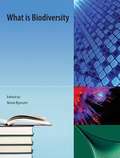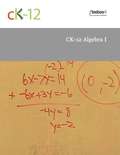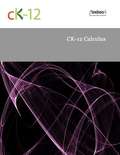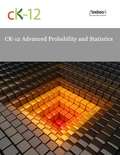- Table View
- List View
FHSST: Grade 12 Maths
by Rory Adams Mark Horner Heather Williams Sarah Blyth Wendy WilliamsGrade 12 maths textbook for South Africa
Happy Maths 2: Shapes and Data
by Mala Kumar Angie UpeshSankhya and Ganith learn that different shapes have different properties.
Happy Maths 3: Measurements
by Mala Kumar Angie UpeshSankhya and Ganith have fun measuring a lot of things.
Happy Maths 4: Time and Money
by Mala Kumar Angie UpeshSankhya and Ganith spend some time learning about money.
Project Management for Scientists and Engineers
by Andrew Barron Merrie BarronThe goal of the Rice University course Management for Science and Engineering (MSCI-610 - ENGI 610) is to provide the skills for science and engineering to meet the challenges of their future careers, whether they be in academia, industry, or as an entrepreneur. The course was started in 1998 and has evolved over the years. The course is taught to undergraduates, graduate students, and professional masters students and involves the areas of organizational behavior & leadership, accounting, marketing, strategy, entrepreneurship, and project management. It is this last area that is covered in this book. Irrespective of your future career in science and engineering you will be involved in projects and an awareness of the factors that enable a successful project is important for all team members. This course is not aimed at making you a certified project manager, but to provide the skills that will allow you to be a more effective project team member and also when you are dragged screaming and kicking into the role of accidental project manager.
What is Biodiversity
by Melina Laverty Eleanor Sterling Ian Harrison James Gibbs Robert AhlfingerThis collection provides an overview of what is meant by the term 'biodiversity,' and how we measure it. The collection reviews the different levels of biodiversity, or the 'biodiversity hierarchy' including: genetic and phenotypic diversity; population diversity; species diversity; community diversity; ecosystem diversity; landscape diversity; and historical and ecological biogeographic diversity. Brief definitions of populations, species, communities, and ecosystems are provided, with some introductory discussion of different types of 'species concepts.' The collection defines the terms 'species richness' and 'species evenness' as methods for measuring species diversity, and it discusses the use of species richness as a surrogate for describing overall global biodiversity. The collection reviews the distribution of biodiversity in space, explaining the definitions of alpha, beta and gamma diversity for measuring diversity within and between ecosystems. The environmental factors that affect these patterns of spatial diversity are briefly discussed. The collection also includes a brief review of the different ways by which assessments of spatial diversity are used for conservation planning and management (e.g., based on ecoregions, or biodiversity hotspots and coldspots). The collection concludes with a brief discussion of diversity over geological time.
CK-12 21st Century Physics Flexbook: A Compilation of Contemporary and Emerging Technologies
by Ck-12 FoundationPhysics textbook
CK-12 Algebra I
by Ck-12 FoundationCK-12 Foundation's Algebra FlexBook is an introduction to algebraic concepts for the high school student. Topics include: Equations & Functions, Real Numbers, Equations of Lines, Solving Systems of Equations & Quadratic Equations.
CK-12 Biology I - Honors
by Ck-12 FoundationCK-12 Foundation's Biology 1- Honors FlexBook Covers the following chapters:<P><P> Foundations of Life Science- scientific investigations, methods, observations, & communication.<P> Chemical Basis of Life- matter, the significance of carbon, lipids, proteins.<P> Cell Structure and Function- prokaryotic, eukaryotic, plant, & animal cell features; structures / functions of DNA, RNA, protein, cell transport, homeostasis.<P> Photosynthesis- water, carbon, and nitrogen cycle between abiotic and biotic resources.<P> Cellular Respiration- relation to glycolysis, Krebs Cycle, electron transport chain.<P> Cell Division and Reproduction- cell division, reproduction.<P> Mendelian Genetics- inheritance, sex-linked traits.<P> Molecular Genetics- DNA, RNA, protein synthesis, mutation, regulating gene expression.<P> Human Genetics- human genome, diseases, Biotechnology- DNA technology, gene cloning.<P> History of Life- evolution, macroevolution, extinctions, episodic speciation, response to change.<P> Evolutionary Theory- Darwin's Theory of Evolution, common ancestry and natural selection.<P> Evolution in Populations- genetics of populations, genetic diseases, natural selection.<P> Classification- Taxonomy, scientific classification of organisms.<P> Principles of Ecology- Ecology's relation with energy; ecosystems, the water, carbon, and nitrogen cycles.<P> Biomes, Ecosystems and Communities- terrestrial/ aquatic biomes, community interactions.<P> Populations- Analysis of populations and dynamics.<P> Ecology and Human Actions- Balance between humans and the earth addressing natural resources, ecosystems, & biodiversity.<P> The Human Body- systems.<P> Nervous and Endocrine Systems- structures & functions, homeostasis.<P> Skeletal, Muscular, and Integumentary Systems- structures, functions, & homeostasis.<P> Circulatory and Respiratory Systems- structures and functions.<P> Digestive and Excretory Systems- structures/ functions, food pyramid.<P> Immune System and Disease- Body defenses against pathogens.<P> Reproductive System and Human Development- human reproductive systems, reproductive lifecycle, STDs.
CK-12 Calculus
by Ck-12 FoundationCK-12 Foundation's Single Variable Calculus FlexBook covers the following chapters: Functions, Limits, and Continuity - A review of the basics of functions is given. Students use linear approximations to study the limit process, before a more formal treatment of limits is given. Differentiation - Students explore instantaneous rate of change, and the relationship between continuity and differentiability. The Chain Rule and implicit differentiation are reviewed. Applications of Derivatives - Students gain practice with using the derivatives in related rates problems. Additional topics include The First Derivative Test, The Second Derivative Test, limits at infinity, optimization, and approximation errors. Integration - This chapter includes indefinite integrals calculus, initial value problems, definite integrals, the Fundamental Theorem of Calculus, integration by substitution, and numerical integration. Applications of Integration - This chapter includes applications of the definite integral, such as calculating areas between two curves, volumes, length of curves, and other real-world applications in physics and statistics. Transcendental Functions - This chapter includes differentiation and integration of logarithmic and exponential functions, exponential growth and decay, derivatives and integrals involving inverse trigonometric functions, and L'Hospital's Rule. Integration Techniques - Students explore integration by substitution, integration by parts, integration by partial fractions, trigonometric integrals, trigonometric substitutions, and improper integrals. Infinite Series - This chapter introduces the study of sequences and infinite series. The properties presented describe the behavior of a sequence or series, including whether a sequence approaches a number or an infinite series adds to a number.
CK-12 Advanced Probability and Statistics
by Ck-12 FoundationCK-12 Foundation's Advanced Probability and Statistics FlexBook covers the following chapters: An Introduction to Analyzing Statistical Data - Students learn definitions of statistical terminology, and review data, measures of center, and measures of spread. Visualizations of Data - histograms and frequency distributions, common graphs and data plots, and box-and-whisker plots. An Introduction to Probability - events, sample spaces, probability, compound events, the complement of an event, conditional probability, and basic counting rules. Discrete Probability Distribution - random variables, probability distribution for a discrete random variable, mean and standard deviation of discrete random variables and the Binomial Probability Distribution. Normal Distribution - standard normal probability distribution, the density curve of the normal distribution, and applications of the normal distribution. Planning and Conducting an Experiment or Study - surveys, sampling and experimental design. Sampling Distributions and Estimations - sampling distributions and the Central Limit Theorem. Hypothesis Testing - The P-value, testing a proportion hypothesis, testing a mean hypothesis, and testing a hypothesis for dependent and independent samples. Regression and Correlation - scatterplots and linear correlation, Least-Squares regression, inferences about regression, and an introduction to multiple regression. Chi-Square- the Goodness-of-Fit test, test of independence, and testing one variance. Analysis of Variance and the F-Distribution - the F-Distribution and testing two variances, the One-Way ANOVA test, and the Two-Way ANOVA test. Non Parametric Statistics - nonparametric statistics, the rank sum test and rank Correlation, and the Kruskal-Wallis test.





